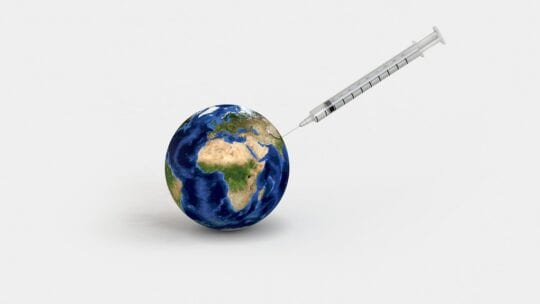
Upon first glance, observers of the media might think pharmaceutical companies are in a race to become the first to develop and administer a COVID-19 vaccine. This belief strengthens with every announcement coming from Pfizer last week or Moderna, as we saw today.
But communicators might want to look a little deeper, as a race can devalue the important, strategic work of healthcare PR pros. The power of collaboration, rather than competition, emerges as the true message with each news release, according to Gil Bashe, managing partner, global health, Finn Partners.
“For the biopharma industry, there’s never been a more amazing time to demonstrate spirit and innovation, and not just (vaccine) development, but working together for the benefit of society—it's a very critical communications message,” Bashe said.
Vaccine Variety is Needed
The more pharma companies share information with and distribute it to the public, the more people can understand how vaccines work. And because of the global spread of COVID-19, it’s going to take more than one company to fulfill the needs of the world’s population. Requirements will vary according to demographic and economic needs.
“These two vaccines (Pfizer and Moderna) were comparing efficacy rates, looking at different types of populations…[as well as] the availability, production and supply chain of both vaccines,” Bashe noted. “These will be deployed in tandem. We forget other companies will be reporting out data as well. Some vaccines require more than one dose, some require different types of refrigeration. The reality is, whenever you have production, you need multiple options available for multiple population types and regions. People should be applauding each one that comes online.”
Branding Safety
Another benefit of multiple news releases across the industry allows for the public to see the standards of safety and efficacy being employed for vaccine production. This can promote a positive outlook for citizens concerned with vaccine safety.
“More vaccines demonstrating safety is going to build the confidence of society...showing that we can have a safe and effective vaccine,” Bashe said. “What these announcements are doing for society is critical for the confidence of the U.S. and other nations wondering about the scientific process.”
A combined effort across the industry shows the vaccines’ ability to work in broad population types—across age, sex, ethnicity, etc.
“The more vaccines that come forward with safe, effective data should inspire greater confidence in all populations,” Bashe said.
A PR Campaign for Science
And since the pandemic began, the debate about science overruled many outcries for treatment and best practices. The more facts and statistics revealed by multiple vaccine companies, the more society is invited back into the conversation about science.
When you see a news story about Pfizer one day, and Moderna another, it provides a great opportunity to keep the work and results top-of-mind for consumers and observers. And fortunately, much of the results are positive, promoting science's ability to help on a global level.
“It’s a mistake to look at this as a race to the finish line,” Bashe said. “The reason it’s called a pandemic is, it’s across the globe. We will not be safe unless every country is safe. So we need multiple types of vaccinations to go to multiple locations."
For example, in Africa, "refrigeration storage is more of a challenge—maybe vaccines that need less-powerful refrigeration can go to rural, developing nations. Vaccines with a high, sub-zero refrigeration rate can go to urban areas. All this has to be figured out.”
Nicole Schuman is a reporter for PRNEWS. Follow her @buffalogal
